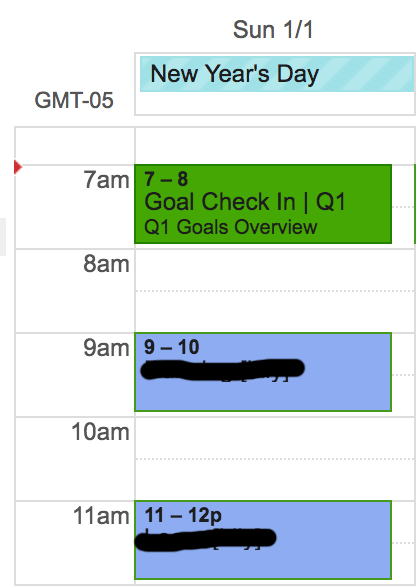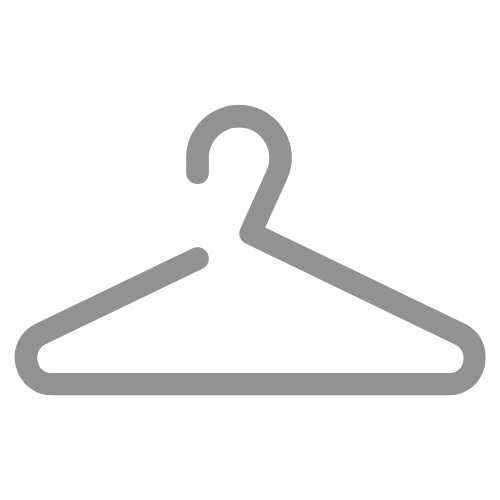This guide offers a simple goal setting framework that will help you take action against and achieve your #1 goal in the next 365 days (if not earlier!).
There are two types of people in this world: the successful and the not-so-successful.
Through my own personal experience, as well as careful observation of thousands of subscribers and students that have come through Cultivated Culture, I've noticed that there is one thing that separates these two groups.
The successful ones do it regularly while the not-so-successful get too busy with other things and sweep it under the rug.
The little thing I'm talking about?
Goal Setting.
But not just any type of goal setting. A purposeful and structured goal setting plan that takes time to write out and consistently assess and adjust as time goes on.
In this post, I'm going to teach you the tiered goal setting framework I use to effectively plan out my annual goals, break them down into bite size pieces, and then get out there and accomplish them.
This specific structure is the reason I've been able to blow through my goals for the past 3 years in a row, including:
- Landing my dream job and making well over six figures before I was 25 years old
- Starting a side business that generated ~$30,000 in the first 6 months
- Creating a website with 2,000 subscribers and was featured in Forbes, Inc., Fast Company, The Huffington Post & The Muse in less than 8 months
In this post, I'll be covering:
- How To Find Your “Why”
- How To Set Smart Goals
- An easy to follow tiered goal setting template
Are you ready? Let's dive in.
Part #1: The Science Behind Goal Setting
Before we get into the framework itself, I want to breakdown the science behind setting goals. I think we all understand why goal setting is important, but most of us don't know what causes certain people to create a habit of accomplishing them while others fall short.
As of this writing, we're in the middle of the goal setting gold rush: New Years. It's less than a week away, and people are already day dreaming about what they will achieve in 2021. But, as Michael Hyatt points out, New Year’s resolutions simply don’t work. Check it out:
- 25% of people abandon their New Years resolutions after one week
- 60% of people abandon them after 6 months
- The average person makes the same New Years resolution 10 times without success
- Even after a heart attack, only 14% of patients make a change to their diet and exercise strategy
That is insane! And incredibly interesting…How could someone not make any changes to their strategy after suffering a heart attack!?
When we dive a little bit deeper, it turns out to be the way most of our brains process goals.
What Do I Want? vs. What Will I Endure?
When most of us think of our goals, we tend to focus on what we want to achieve. Makes sense right?
However, as Mark Manson points out, we should actually be asking ourselves a very different question. Rather than “what do I want to achieve,” we should be asking ourselves “what kind of pain would I prefer more?”
I know that sounds crazy, but bear with me.
It feels good to set goals. We sit around for 20 minutes and dream about all of the cool things we'd potentially love to do. Write a book, start a business, travel the world, quit our jobs. If you take 2 minutes to begin thinking about any one of those topics, your mind begins to build out a story where we're sitting in Bali sipping Mai Tais while our business is passively printing money.
That feels good.
What doesn't feel good is the 3 or so years ahead of you where you have to defy steep odds, accept failure, and press on in the face of adversity to build a company that no one has ever heard about before. That doesn't always feel good. In fact, most of the time it feels downright awful.
Whether you want to have the best body of your life, to make $100,000 and quit your job, or simply buy a house and stop renting – it's not going to be easy. There will be obstacles. There will be pain. The question then becomes, which pain are you willing to endure most in order to get what you want?
Finding Your “Why”
This is the point where your “Why” comes into play.
Your “Why” is not your expected result. It's your purpose. It's the reason you're going to drag yourself out of bed in the morning to go to the gym, or write that next blog post despite your crippling hangover and your brain yelling “No! Go back to sleep!”
In his iconic TED talk, Start With Why, Simon Sinek talks about why this is so powerful and he illustrates it through a concept called The Golden Circle:

Sinek explains that the circle above is actually a perfect mirror of how our brain works. The outside (yellow) ring is our What which closely resembles the part of our brain responsible for our rationale and analytical thoughts. The middle two circles (red & black) are responsible for the primal part of our brain that powers subconscious behaviors such as our trust, loyalty and decision making.
If you truly understand your “Why,” you are powering your goal from the part of your brain that can actively alter your behavior and change your habits.
If you haven't quite found your “Why” yet, check out my article: “What Should I Do With My Life? A Step-By-Step Guide.”
Marathons: An Example of “Why”
Do you know someone who has trained for a marathon?
I live in New York where marathoning has become all the rage for people between the ages of 21 and 50. Every year, I have a friend who tells me that they are going to run the New York Marathon – it's inevitable. I always ask them why they want to run, and the typical response is, “because it sounds cool.”
A few years ago, I heard a different kind of “Why” for running marathons. There's a family up in Massachusetts called the Hoyts. The Hoyts have a son named Rick who was born with cerebral palsy. In 1977, Rick asked his father if they could run in a race together to benefit a lacrosse player at his school who had become paralyzed.
His father, Dick, who was 36 and not a runner agreed. He trained as best he could and he pushed his son across the finish line of that 5 mile race. Afterwards, Rick turned to his father and said, “Dad, when we're running, it feels like I'm not handicapped.”
Everyday following that race, Dick went out for a run with a wheelchair and a bag of cement (when Rick was at school). Over 40 years later, Team Hoyt has competed in 1,130 endurance events, including 72 marathons and 7 Ironman triathlons.

Team Hoyt looking completely badass.
Meanwhile, half of the friends who tell me they are going to run the marathon drop out…
Both sets of people – Dick Hoyt and my friends – had to face obstacles. They both had the same goal – to run at least 26.2 miles. But only one pushed through and finished. Why? Because Dick Hoyt's “Why” was a hell of a lot more powerful than my friends'.
Write Down Your “Why”
Before we get to the actual practice of goal setting, I want you to write down your “why.”
Why do you want to lose 30lbs.? Why do you want to start a business teaching people about mindfulness? Why do you want to make enough money to send your kid to private school?
Write down your “Why” and put it in a place where you'll see it every day. Here is mine:
Austin's Why
To empower people with the skills they need to increase their quality of life and, thus, the quality of the lives around them.
We live in a time where the value of the dollar is constantly being deflated, the job market is becoming increasingly competitive and people are forced to work more hours than any previous generation in hopes of making a living. Conversely, the timing has never been better to take control of your life and start something that gives you financial freedom and flexibility. My goal is to help people achieve the latter. Instead of “living to work,” I want you to “work to live the life you deserve.”
When you're done, move on to Part 2.
Part #2: Smart Goal Setting
Now that we know our “why”, it's time to focus on the smaller, yet specific goals that will help us accomplish it.
I bet you already have a loose idea of what those goals are. I'd also bet that if you wrote them down, they wouldn't be nearly as effective as they would be if you wrote them down after digesting this section. So let's try it!
Grab a piece of paper and write down all of the things you want to accomplish in the next 12 months. Here are mine:
- Launch a course full of premium content that will help people take a significant step towards financial freedom
- Grow the Cultivated Culture subscriber base by 300%
- Complete the New Jersey Half Marathon in under 2 hours
Your turn, take your time…
Done? Awesome, you're 42% closer to achieving those goals (seriously!).
Now set that piece of paper aside and don't do anything with it until you've reached the bottom of this guide.
The Anatomy Of An Effective Goal
The first step on our goal setting journey is to fully understand the ingredients that make up an effective goal. If you've already done some research, you're probably familiar with SMART goals. This is the foundation of goal setting, but it's also missing one crucial element.
Let's start off by breaking down the SMART system.

Courtesy of J6Design
When you're writing out your goal, you want to ensure that it includes the following 5 elements:
Specific – What do you want? Spell it out in detail.
Measurable- When the clock strikes midnight, you need to be able to calculate whether or not you achieved your goal.
Actionable- Your goal should include a verb as well as a plan of action.
Realistic- Your goal needs to be achievable while still being challenging. You're not going to make a million dollars 90 days after you start your company, but you could definitely aim for $10,000.
Time-Constrained- There has to be a specific point at which your hour glass runs out. It could be 12 months, 90 days, or 1 week. Either way, the deadline must be absolutely clear.
Here's a good example of a SMART goal:

Here are a few more examples of good goal setting vs. bad goal setting:
Bad Goal: I want to start a business and quit my job next year.
Good Goal: In the next 12 months, I am going to create an online business that sells fitness products to people who work from home. I am going to generate $50,000 of gross revenue by building an email list and then testing, validating and creating a product that meets their needs.
* * *
Bad Goal: I am going to land my dream job at Google next year.
Good Goal: I am going to land my dream job as a Salesperson in the Travel vertical at Google by November 1st, 2017. I am going to do this via a targeted networking strategy where I will develop relationships with influencers working in that department at Google as well as taking courses to develop the skills I need to succeed in that role.
* * *
Great! We're off to a good start. However, this is where 99% of goal setters stop. They come up with a few SMART goals and call it a day. We're striving to be part of the 1% that goes on to achieve our goals so let's talk about what's missing.
What SMART Goals Are Missing?
The SMART system is a great one, but it has its flaws. Actually, flaws may not be the right word – it just hasn't reached its full potential.
As mentioned before, it's easy for us to say “I want to write a bestselling book in 3 months,” but it's much harder to get out there and do it. The key to success as a goal-achiever is consistency. Big goals are easy to ignore if they're not assessed on a regular basis. In other words, we need to be consistently evaluating them.
You need to show up every day with an idea of how you're pacing and, if you're behind, what you're doing to make up the gap. The simplest way to do this is by breaking up your main goal into smaller, bite sized goals that you can tackle on a weekly or monthly basis.
For example, if I want to write a best selling book, I need to fully understand all of the pieces that go into writing a best selling book. Those might be:
- Research a niche with low-competition and a high propensity to buy
- Outline the book (how many chapters, what are their topics, etc.)
- Write Chapter 1, then Chapter 2, etc.
- Have an editor proofread your draft
- Get a cover designed
- Build out & execute a marketing plan
- Launch the book
Now here's a blueprint that I can manage on a weekly basis. I'm going to spend Week 1 researching my niche. Week 2 will be outlining the chapters. I'll write Chapters 1 & 2 during Week 3 and then Chapters 4&5 during Week 4.
Think of it like building a house. Is your house going to come out better if you follow a step-by-step manual on how to build it, or if you look at a picture of a fully formed house and try to recreate it?
The step-by-step approach wins every time.
This is the methodology that my tiered goal setting framework was built on.
- Understand your overarching goal
- Break it down into the small steps
- Set up accountability checkpoints
Part 3: The “Tiered Goal” Framework
If you follow the system I'm about to lay out, your chances of accomplishing your goals this year will increase substantially. I guarantee it.
Tier 1: Annual Goals
First, we're going to start with the fun stuff – our overarching goals. What exactly do you want to have accomplished 365 days from now?
When you're thinking about these goals, I want you to think BIG. As in, take the initial number that you came up with when thought about your goal and add 50% – make it so that your goal feels like it's slightly out of reach. Your goals should push you without being overwhelming.
Want to generate $50,000 next year from your business? Make it $75,000. If you can make $50k then you can certainly make $75k.
Want to lose 30 lbs? Make it 45 (unless that brings you to an unhealthy weight). If you can lose 30 lbs, an additional 15 should be a piece of cake.
There are a few reasons we want to overstep our boundaries here. The first is that most people tend to set achievable goals when they start out. The problem with achievable goals is that, once they are achieved, enthusiasm and drive plummets and the goals usually aren't exceeded by very much.
If we set a goal that's just out of reach, we are more likely to sustain our levels of performance and motivation as we continue to make progress.
The second reason is simple. When you achieve a goal that you thought wasn't going to be possible, you feel f**king awesome. It's one of the best feelings in the world. If you do happen to come up short, you'll still probably end up beating your original goal.
How Many Annual Goals Should I Set?
Good question! I usually stick with a maximum of four: two business goals and two personal goals. Any more than that can be overwhelming. If you only have one goal that you want to accomplish, that's totally fine too – don't try to go more.
Write ‘Em Down
Remember that piece of paper I had you set aside earlier? Pull it back out and write down your annual goals (and remember to use the SMART system!). Here is an example of one of my business goals:
“In 2017 I want to grow the Cultivated Culture subscriber base 300% via the creation of high quality content, thought leadership initiatives & a focus on helping people take one step closer to financial freedom and flexibility.”
Now compare them to the original goals you had written. Big difference, right?
Tier 2: Quarterly Goals
Now that we have our overarching annual goals written out, we want to begin breaking them down into manageable chunks.
Our first cut is going to be at the quarterly level – every 3 months. The catch here is that I only want you to focus on one quarter – Q1. Forget about the other 3 for right now. I want you to ask yourself, what can I do over the next 3 months that will put me in a position to achieve my annual goal.
The key here is to remember that results tend to backload, especially if you're just starting out. You're not going to generate 25% of your $75,000 in Q1. Instead, you want to focus on building a strong foundation so that you can capture 33% in Q2. Make sense?
Write ‘Em Down
Write out what you need to achieve over the next 3 months to put yourself in a position to achieve your annual goal. Here is what mine would look like for the above goal:
- Write 3 pieces of “remarkable” content (1 per month) on carefully researched topics that will resonate with my audience and drive long term value through SEO rankings
- Run a giveaway with at least two major brands in the career development space with a prize that offers incredible value to my audience
- Reach out to universities & colleges in New York (specifically NYU & Columbia) and speak to at least 2 classes
Set Up Touch Points
Once you have your quarterly goals written down, I want you to go into your personal calendar and block off time at the beginning of each quarter to review your goals from last quarter and set your goals for the next quarter. We'll talk more about the assessment piece in just a minute.

Tier 3: Monthly Goals
Now we're down to our most granular tier – monthly goals. These goals are going to be the most concrete and action oriented of the bunch. They are the immediate actions you need to take in the next 4 weeks. If we continue with the goals above, here are what mine might look like for the upcoming quarter:
- Write at least 500 words 5 days this week alternating between the preselected topic for my next piece of “remarkable” content and emails for the newsletter.
- Identify 10 brands that could be potential partners for the giveaway (week 1), reach out to all 10 (week 2) & reassess once the results are in
- Gather emails for entrepreneurship professors are the top 50 colleges in the US (week 1), reach out to all 50 about speaking to their class week 2) & reassess once the results are in
See how these items look much more like a to-do list than a list of goals? That's what we're aiming for at the monthly level.
Set Up Touch Points
Just like we did with our quarterly goals, block off time on your calendar each week to review your pacing (I prefer Sundays):
- Did you accomplish your weekly goals?
- What worked?
- What didn't work?
Then adjust your goals for the next week to either challenge yourself to achieve more or make up for lost ground from the previous week. You always want to be extrapolating your weekly performance to see if you are on pace for your quarterly goal. If not, you need to reevaluate and pivot. The definition of insanity is doing the same thing and expecting different results – don't do that!
Evaluating Your Goals
It's important to remember that goals are fluid. Some months or quarters you will blow through the goals you set while other months you'll struggle to make progress. Learning to take a step back and evaluate your goals regularly is crucial.
If you are over indexing on your goal, evaluating is easy. All you need to do is increase your target so that you still feel challenged each day.
Things get a little bit more complicated when we're not pacing to hit our goals, especially when we're still behind schedule after the 6 month mark. When do you know if it's worthwhile to keep pushing or if it's time to move on?
Taking another page out of Michael Hyatt's book, I like to use the “Three R's Method” – Recommit, Reset or Remove.
Recommit
Sometimes we lose sight of why we started down this path in the first place. However, if you're able to stoke that fire in your belly back to where it was in the beginning, it's probably worthwhile to keep going. I find that asking myself 2 questions can be really helpful in this situation:
- What is at stake if I achieve this goal?
- What is at stake if I don't achieve this goal?
Take 5 minutes to find a quiet place. For the first 2 minutes, imagine what your life would be like if you accomplished your goal. What would happen? Picture it.
Take the next 2 minutes and think about what would happen if you didn't accomplish your goal. If everything stayed the same as it is right now.
Take the remaining minute to reflect on what you felt. If the motivation returns, it's time to Reset. If it doesn't it's time to Remove.
Reset
If you are able to get re-energized about your goal, take a look at how much time you have left to accomplish it and reset your expectations. If your goal was to make $50,000 over the course of 2016 and you wait until July to reassess, that same figure moves from “challenging” to “overwhelming.”
Adjust your targets accordingly and then repeat Tiers 2 & 3.
Remove
If, after this process, your goal still doesn't resonate with you, throw it out. Remove it from your list.
People have this stigma that goals are static and not accomplishing everything you expected to do this year results in failure. This is completely untrue.
If you have a goal that you just aren't excited about anymore, keeping it around is only going to detract from the other goals while making you feel terrible in the process. Delete it, shift the energy that was being spent there over to your other goals and don't look back.
Now take a moment to leave a comment below with your #1 goal and bring yourself 42% closer to accomplishing it!
Summary
We broke down the SMART system and talked about how to create goals using these 5 elements:
- Specific
- Measurable
- Actionable
- Realistic
- Time-Constrained
We also took a deep dive into my tiered goal framework, and why it's important to set goals annually, quarterly, and monthly. Sometimes we lose sight of our path, but it's important to bounce back and continue pressing onward until you've accomplished what you set out to do. The reward is worth the effort!
For more information on goal setting, check out these posts from the blog:
- How To Find A Career Path That's Right For You
- Questions To Ask In An Informational Interview
- What Are Career Goals And How To Create Them
- Where Do You See Yourself In 5 Years?





























My goal for the next year is to grow the Cultivated Culture subscriber base 300% via the creation of high quality content, thought leadership initiatives & a focus on helping people take one step closer to financial freedom and flexibility.
What’s yours?
– Austin
My goal for the year is to meditate every day, even if just for 5 minutes.
This is an awesome article. I’ve been reading your article for the past few weeks now. I plan on following the well laid out plan on goal setting, that you put so much effort into. Thank you
Thanks for the in-depth article Austin!
My #1 goal for 2017 (which I’ve made several times before in different forms) is to reduce my BMI to 13% by exercising at least 5 times/week for 45 minutes, only eating processed sugar or bread on the weekends and having less than 2 drinks/week.
Let’s go!
I have 2 goals for 2017. Take 5 strokes off my golf game and publish a children’s book. I am building the plan per the advice. Thanks for the template!
I have another goal. I would like to make $50,000 extra next year. Clearly that won’t happen on the golf course so the book better be good! Seriously, for that to be a goal, I need something else.
My goal for 2017 is to focus on the important issues and leave the distractions to others. I’m also rooting for change to succeed in Washington. I hope we can all participate in a future filled with positives not acrimony.
My goal for 2017 is to make $50,000 in 12 months.